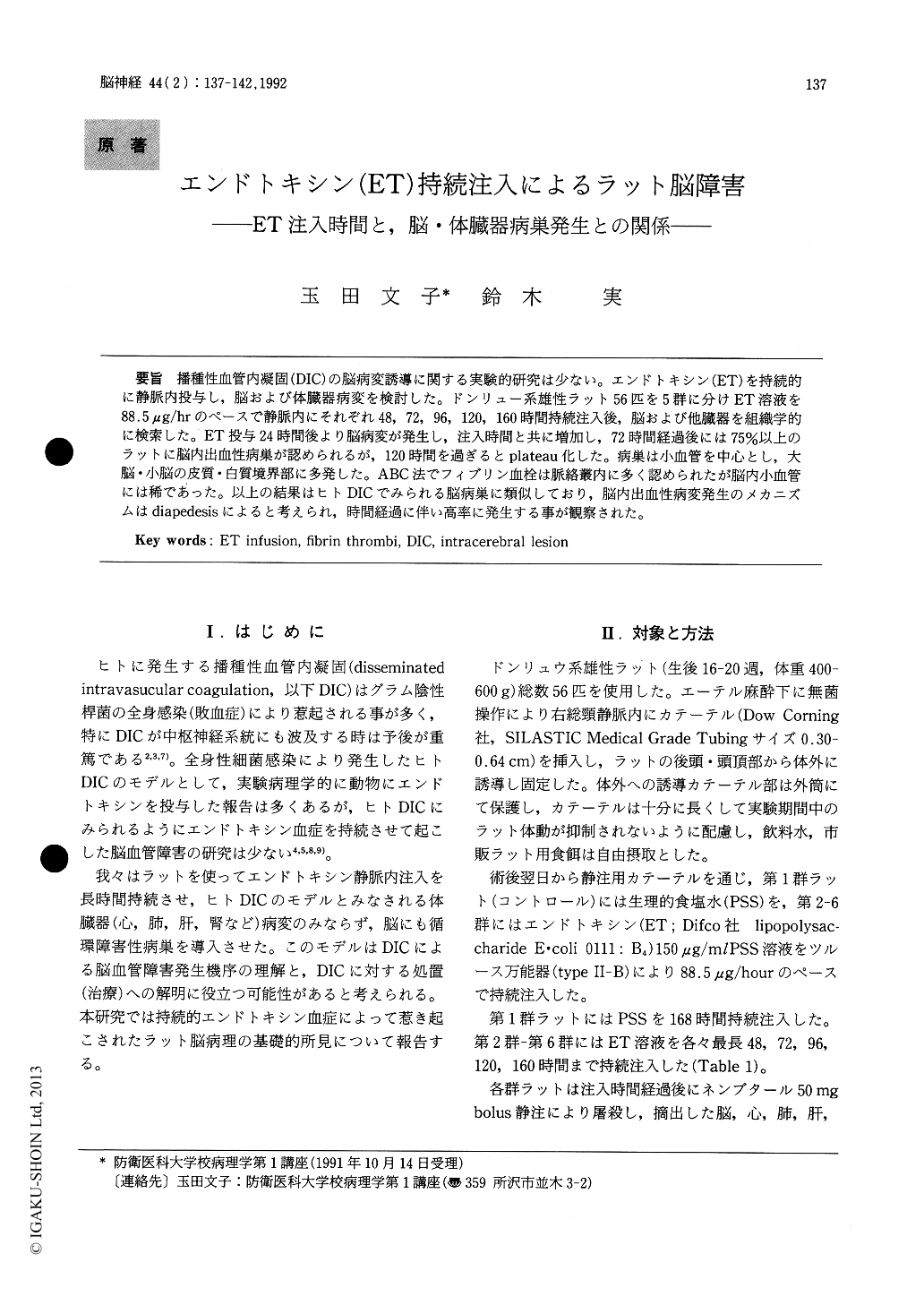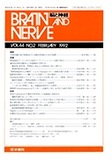Japanese
English
- 有料閲覧
- Abstract 文献概要
- 1ページ目 Look Inside
播種性血管内凝固(DIC)の脳病変誘導に関する実験的研究は少ない。エンドトキシン(ET)を持続的に静脈内投与し,脳および体臓器病変を検討した。ドンリュー系雄性ラット56匹を5群に分けET溶液を88.5μg/hrのペースで静脈内にそれぞれ48,72,96,120,160時間持続注入後,脳および他臓器を組織学的に検索した。ET投与24時間後より脳病変が発生し,注入時間と共に増加し,72時間経過後には75%以上のラットに脳内出血性病巣が認められるが,120時間を過ぎるとplateau化した。病巣は小血管を中心とし,大脳・小脳の皮質・白質境界部に多発した。ABC法でフィブリン血栓は脈絡叢内に多く認められたが脳内小血管には稀であった。以上の結果はヒトDICでみられる脳病巣に類似しており,脳内出血性病変発生のメカニズムはdiapedesisによると考えられ,時間経過に伴い高率に発生する事が観察された。
Experimental generalized Shwartzman raction (GSR) in animals can be induced by systemic injec-tion of bacterial endotoxin lipopolysaccharide (ET) and presents with thrombotic occlusions of small blood vessels in different organs analogous to dis-seminated intravascular coagulation (DIC) in man. It is known that DIC involvement of the central nervous system (CNS) in man presents with grave prognosis, but there is a paucity of information concerning CNS involvement in animals with ET induced GSR. In order to better understand the pathogenesis of CNS involvement of DIC in man, and to search for better prophylactic and therapeu-tic measures against DIC, animal model of DIC was induced by continuous intravenous infusion of E coli ET.
A total of 56 male Donryu rats were divided into 6 groups and infused with physiologic saline (con-trols) and ET lipopolysaccharide at 88. 5μg/hour. The rats were killed at 6 different intervals from 24 to 160 hours and examined postmortem. Intracere-bral hemorrhagic lesions were seen in 2 of 7 rats (29%) as early as 24 hours of ET-infusion and increased to 77% to 87% of rats receiving continu-ous ET infusion up to 160 hours. Formation of fibrin thrombi was uncommon in intracerebral blood ves-sels, but it was frequently observed in choroid plexus capillaries. Fibrin thrombi in other viscera (heart, lungs, liver, kidneys, spleen) were common but decreased toward the end of 160-hour infusion period. Results of this study showed that a continu-ous intravenous infusion of large dose ET lipopolysaccharide in rats produces intracerebral hemorrhagic lesions analogous to DIC changes of brain seen in man. This experimental model of DIC induction in CNS may aid in our understanding of the pathogenesis of DIC and may be useful for evaluation of various therapeutic measures to pre-vent development of DIC injuries to the brain.

Copyright © 1992, Igaku-Shoin Ltd. All rights reserved.


